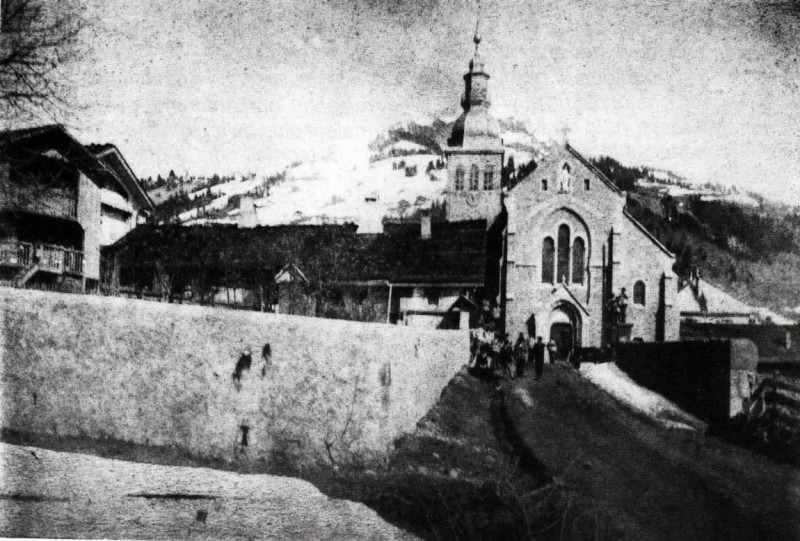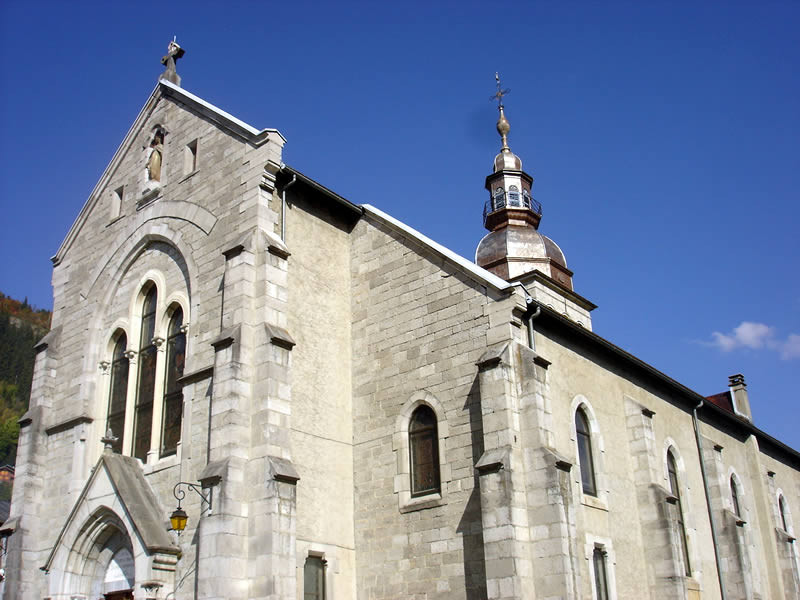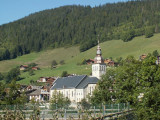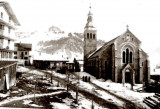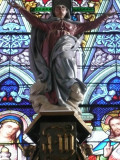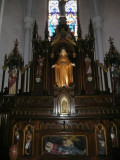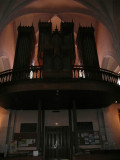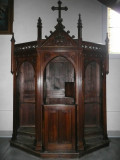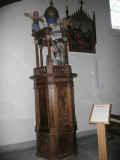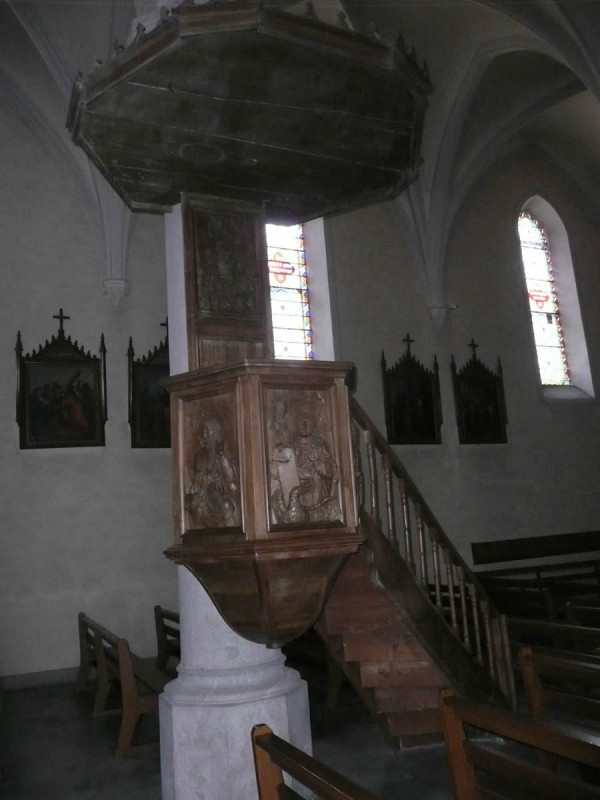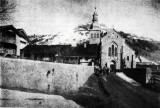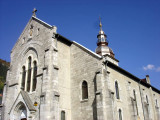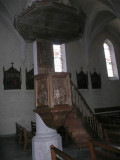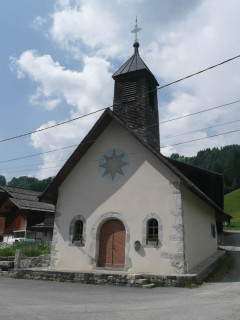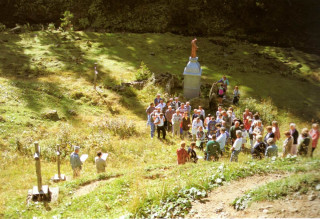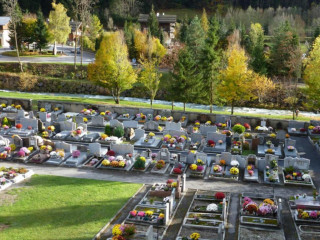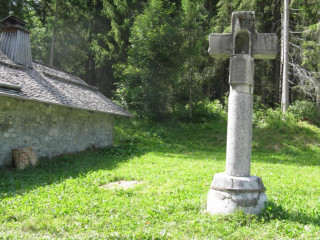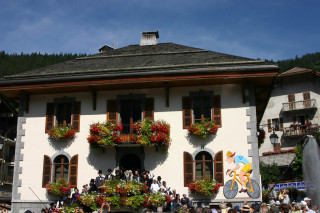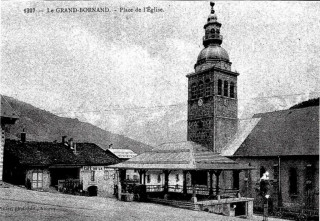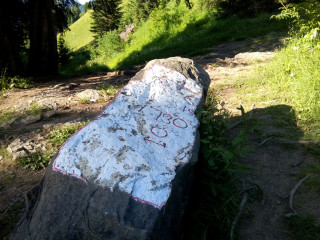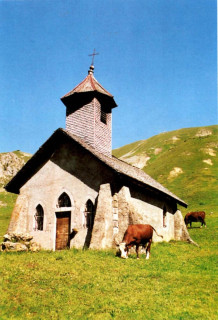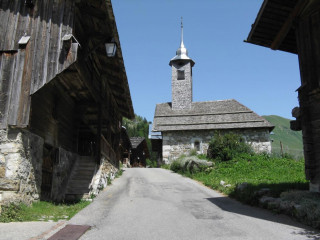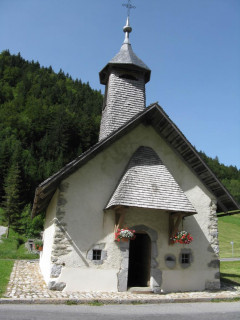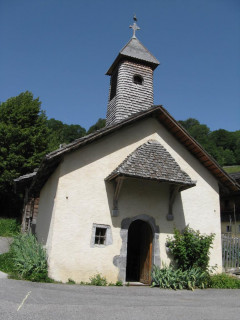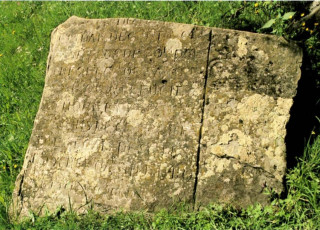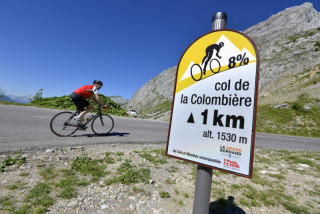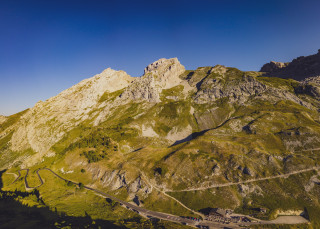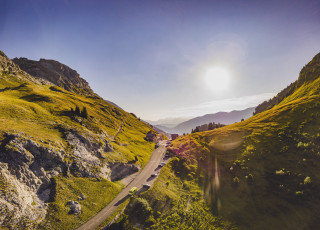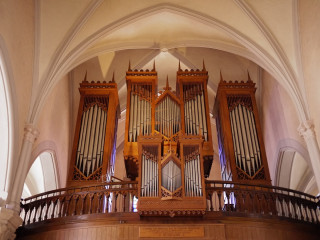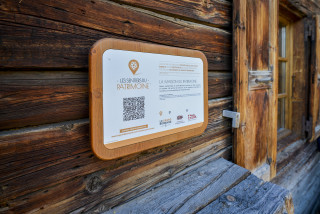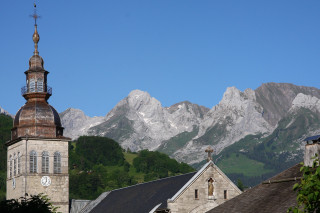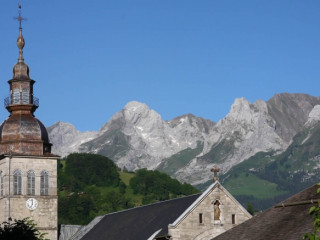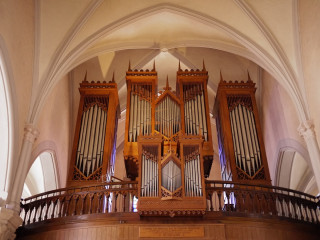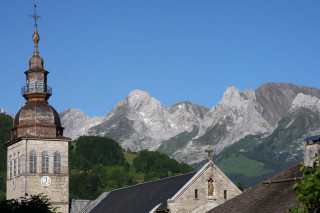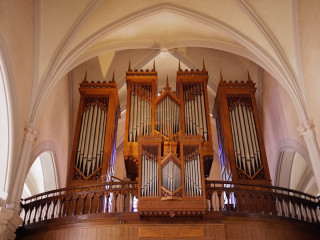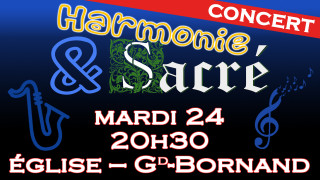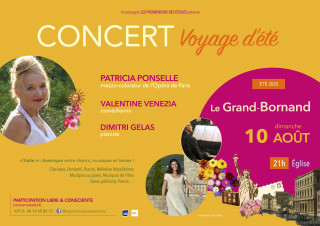Church of Our Lady of Assumption
Contact
Place de l'Eglise
Le Grand-Bornand Village
74450
Le Grand-Bornand
Phone : +33 4 50 02 78 20
After 60 years of building work, undertaken and financed by the local community,it was consecrated in 1877. Built in the neo-gothic style of the XIX century, the architecture is typical of the golden age of the Catholic church.
From the XI to the XIII century, a small chapel stood within the parish. This chapel was served by the church in Thônes.
According to descriptions given by the Bishop of Geneva during his pastoral visits in the XV century, the church was made of wood. In 1569, the church burned down and the 4 bells melted. As the baptismal fonts and the onion-shaped steeple show, it was rebuilt in the typical XVII century Baroque style. The tinplated steeple (today it is made of stainless steel) shows the influence of Savoyard migration to Germanic countries.
In 1794, during the French Revolution, the church was plundered, just as in parishes all over France. The steeple was demolished and 3 of the 4 bells were melted down. The oldest bell, dating from 1767, still remains. At the beginning of the XIX century, the church fell into ruin and finally collapsed under the weight of heavy snow in 1816. Renovation of the church lasted between 1817 and 1877. The onion-shaped steeple was rebuilt between 1820 and 1845.
Certain items are registered in the inventory of Historic Monuments as heritage articles (the baptismal fonts, the pulpit, the stalls and a painting). It was painted by artists from the Val Cesia in Piémont, the Gilardi and the Pellegrini. The 44-pipe Giroud organ was inaugurated in 1988.
The visit is free but in summer, the visit of the church is included in the tour of the Village. Here are the furniture you can see in the Church :
- Classified paintings : The virgin giving the Holy Rosary to St Dominic (18th century); and painting of the Sacred Heart (19th century)
- Bronze bell from 1767
- Pews in walnut
- Pulpit carved in 1827 showing the four evangelists
- Altarpiece (17th century) representing the Dormition of Mary
- Organs (made by Giroud) with 40 pipes dating from 1988
- The classified baptismal carved in 17th century and 1829
- Altar of 1995 with side panels representing two fundamental aspects of the economic life of the parish : the tourism and agricultural life
- Wooden crucifix
According to descriptions given by the Bishop of Geneva during his pastoral visits in the XV century, the church was made of wood. In 1569, the church burned down and the 4 bells melted. As the baptismal fonts and the onion-shaped steeple show, it was rebuilt in the typical XVII century Baroque style. The tinplated steeple (today it is made of stainless steel) shows the influence of Savoyard migration to Germanic countries.
In 1794, during the French Revolution, the church was plundered, just as in parishes all over France. The steeple was demolished and 3 of the 4 bells were melted down. The oldest bell, dating from 1767, still remains. At the beginning of the XIX century, the church fell into ruin and finally collapsed under the weight of heavy snow in 1816. Renovation of the church lasted between 1817 and 1877. The onion-shaped steeple was rebuilt between 1820 and 1845.
Certain items are registered in the inventory of Historic Monuments as heritage articles (the baptismal fonts, the pulpit, the stalls and a painting). It was painted by artists from the Val Cesia in Piémont, the Gilardi and the Pellegrini. The 44-pipe Giroud organ was inaugurated in 1988.
The visit is free but in summer, the visit of the church is included in the tour of the Village. Here are the furniture you can see in the Church :
- Classified paintings : The virgin giving the Holy Rosary to St Dominic (18th century); and painting of the Sacred Heart (19th century)
- Bronze bell from 1767
- Pews in walnut
- Pulpit carved in 1827 showing the four evangelists
- Altarpiece (17th century) representing the Dormition of Mary
- Organs (made by Giroud) with 40 pipes dating from 1988
- The classified baptismal carved in 17th century and 1829
- Altar of 1995 with side panels representing two fundamental aspects of the economic life of the parish : the tourism and agricultural life
- Wooden crucifix
All year round
Description
- Religious heritage :
- Religious heritage
- Bell tower
- Church
- Organ
- Religious site
- Period :
- 19th C
- 20th C
Facilities and services
- Parking :
- Car park
- Parking
- Coach parking
- SITRA services :
- Services
- Services
- Services
- Services
- Services
- Services
To note
- Type of SITRA offer :
- Indoor
- Bad weather alternative
- Accessibility criteria for people with reduced mobility :
- Accessible for wheelchairs with assistance
- Accessible for self-propelled wheelchairs
- Doors >=77 cm wide
Localisation
FICHE_INFO_SIMPLE_LIBELLE_DESTINATION
Eglise Notre Dame de l'Assomption
Place de l'Eglise
Le Grand-Bornand Village
74450
Le Grand-Bornand
GPS coordinates
Latitude : 45.942153
Longitude : 6.427716
Tarifs
Free
View also
The chapel of Le Bouchet, in the heart of the Bouchet valley, was founded in 1704 after a flood. It boasts a beautiful altarpiece, dating back to the XVIII century.
The Stations of the Cross pilgrimage at La Duche originated in 1888, linking the chapel of La Duche with St Bruno's oratory, the site of a miraculous spring.
The original cemetery was situated for a long time immediately around the church. In the mid-XX century, it had to be relocated so that a new village square could be built in front of the Tourist Office, the Town Hall and the church.
The cross at Le Clos du Pin is unusual for two reasons : firstly, this stone cross is the oldest of all the Le Grand Bornand crosses (dating from 1500) and secondly, and for the same reason, it has been classified since 1944 as a heritage monument.
The Town Hall is a stone building, typical of early XX century architecture. It houses all the municipal services and the meeting room for the village council.
The weekly market at the Grenette, the old grain market of Le Grand Bornand, characterizes the heart of the old town square. All sorts of concerts and events also take place here, such as concerts given by the local brass band and many local celebrations.
The inscribed border stone, at the foot of the dale of Tardevant, marks the limit between the villages of Le Grand Bornand and La Clusaz. This stone is about 1m. long and is dated 1755.
The chapel of la Duche is the oldest of Grand Bornand. Based in the end of the XVIIth century,it is reconstructed at the end of the XIXth century. Itis dedicated in particular to several agrarian saints: saint Anne, saint Grat and saint Guérin.
Founded in 1677, the chapel is nestled in the heart of the old village of Le Chinaillon. Despite major renovation work to the building in 1977, it has retained its traditional appearance.
Located in the heart of the hamlet of Les Plans, the chapel of the same name was founded in 1702 after the flooding of the Borne river. From the chapel there is a wonderful view over the Aravis mountain chain.
Standing above the village of Le Grand Bornand, with panoramic views over the Aravis chain, the chapel of Le Nant Robert is well worth seeing. It was founded in 1762 and renovated on several occasions during the course of the XX century.
At the end of the Bouchet valley, just above the hamlet of Lormay, there is a stone testifying to events which took place during the French Revolution : priests refusing to swear allegiance to the Constitution were hidden by the local population.
04 50 02 78 00
The Col de la Colombière has featured in the Tour de France 20 times since 1960. It’s southern side, above the resort of the Grand-Bornand, is much less formidable than the climb from Scionzier.
Gradient: 6.5%
04 50 96 69 69
A very athletic circuit that culminates with an ascent of the Col de la Colombière. Cycling the route clockwise minimises the time spent on the busy main road through the Arve Valley and allows you to climb the shady side of the Colombier.
04 50 02 78 00
The southern side of the Col de la Colombière, from the Grand-Bornand, is much less formidable than the climb from Cluses. Nevertheless, the last four kilometres above Chinaillon are very steep.
04 50 02 78 00
Saturday 05 July 2025
at 20:00
Within the framework of "La Nuit des Églises", organized by the Savoie Mont-Blanc heritage guides and the association Point d'Orgue du Grand-Bornand,...
04 50 02 78 00
During your walks, use your mobile phone to discover in an interactive way all the richness of Le Grand-Bornand.
04 50 02 78 00
15 August(every year)
at 10:30
Our Lady of the Assumption Church invites you to celebrate the Mass of the Assumption of the Virgin Mary.
04 50 02 78 00
Wednesday 20 August 2025
at 21:00
Flute and organ concert with Céline Bernard and Vincent Foure.
04 50 02 78 00
Wednesday 16 July 2025
at 21:00
Music concert by Quartuor 441.
04 50 02 78 00
Wednesday 23 July 2025
at 21:00
Organ concert with Marie-Cécile Lahor.
04 50 02 78 00
Wednesday 06 August 2025
at 21:00
Harpsichord concert with Lucie Chabard.
06 81 21 47 98
Tuesday 24 June 2025
at 20:30
The Chante-Fier vocal ensemble presents a choral concert under the direction of choirmaster Zohra Carpentier.
04 50 02 78 00
Sunday 10 August 2025
at 21:00
The company Les promeneurs des étoiles presents the concert Voyage d'été with Patricia Ponselle, mezzo coloratura from the Paris Opera, Valentine ...

